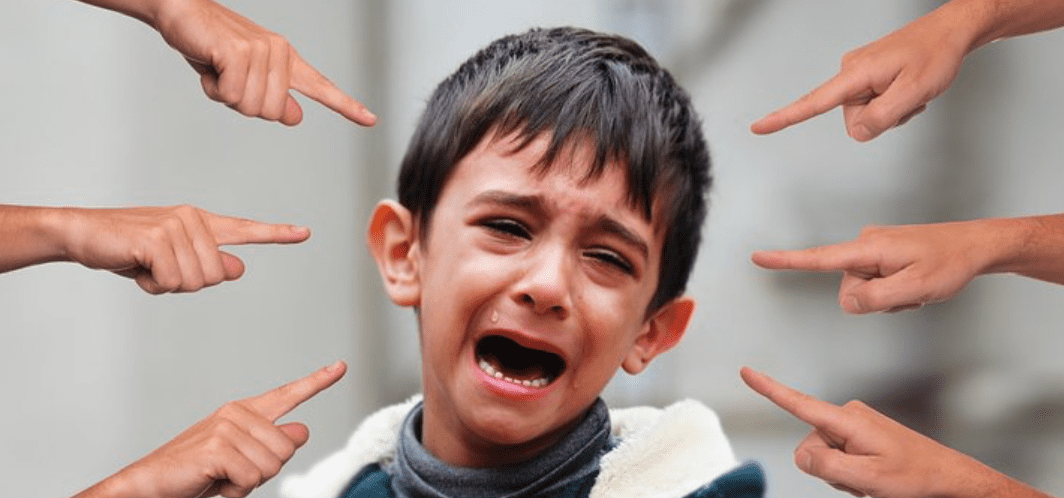Discrimination in any form is harmful and unacceptable. This is especially true of discrimination in education.
Unfortunately, discrimination is present in almost every aspect of our lives, but one of the gravest problems is related to discrimination in education. Namely, if someone is treated unfairly by an education provider, such as a school, college or a university based on who they are, we are talking about a very serious issue: discrimination in education.
How can you identify discrimination in education?
If order for an unfair treatment to be counted as discrimination, several elements have to be clearly present. The first one is the person/institution treating you unfairly, the second one is the type of treatment you’ve received, while the third is related to the nature of the treatment, since there are different types of discrimination.
Who is treating you unfairly?
The list of people who mustn’t discriminate against you includes schools, colleges, universities, teachers or staff employed by educational institutions. You may be either a pupil or student, in the process of applying to become a pupil or student or a former pupil or student. Whether the educational institution is public or private makes no difference, since they are all obliged to act in accordance with the Equality Act.
Reasons
The Equality Act recognizes an unfair treatment by an education provider if such treatment is based on your disability, gender, marriage and civil partnership, pregnancy or maternity, race, religion or sexual orientation.
What constitutes an unfair treatment?
You mustn’t be discriminated against in relation to admissions, provision of education, school policies and procedures, access to benefits, facilities or services, such as school meals and sports activities, exclusions or any other detriment.
Nature of discrimination
There are several types of unlawful discrimination. For example, direct discrimination is any act that treats you differently or worse than others based on who you are or who they think you are. If the reason for such treatment is because you have connections with someone with protected characteristics, such as a disabled relative, we are talking about direct discrimination by association.
On the other hand, indirect discrimination is an act whereby an educational institution applies a policy, rule or way of doing things that puts you, as well as other people like you, at a disadvantage in comparison with others. A bad treatment connected to your disability is called discrimination arising from disability.

Finally, there is harassment, i.e. a treatment that is offensive, frightening, degrading, humiliating or distressing, while the term victimization is used to talk about a maltreatment you receive after complaining about discrimination or because they think you have complained about it.
How is discrimination dealt with?
Discriminated pupils and students need to receive the right and prompt assistance from the provider of education. Since there is a serious danger that such pupils and students not only drop out of school, but also become disillusioned and engage in illegal activities afterwards, they have to be talked to and motivated to continue their education and focus of making the most of it. Also, teachers need to be reminded about the right of every pupil and student to have equal opportunities.
Another useful method is provision of financial assistance to those who can’t afford scholarship fees, but have the potential to continue their studies. Particularly useful in this respect is the assistance such as girls’ scholarships that allows members of discriminated groups to pursue further education.
Applicable laws
Fortunately, many federal laws prohibit discrimination in the realm of education. When it comes to federal laws, there is Title VI of the Civil Rights Act of 1964, Title IX of the Education Amendments of 1972, the Equal Educational Opportunities Act of 1974, Title II of the Americans with Disabilities Act of 1990, the Individuals with Disabilities Education Act, and various other statutes. These federal laws apply only to schools that accept federal funding, but they are the vast majority of K-12 and higher education institutions.
Enforcement of anti-discrimination education laws
The federal Department of Education has an Office for Civil Rights (OCR), which enforces many of the federal civil rights laws prohibiting discrimination. It also enforces the Boy Scouts of America Equal Access Act (BSAEAA), under which no school providing an opportunity for community groups to meet on school premises can deny equal access or fair opportunity to meet to any youth group listed in Title 36 of the United States Code as a patriotic society.
Grievance procedure
Usually, there are grievance procedures at an institution for dealing with complaints, investigating, and providing remedies. A person complaining of discrimination should use the grievance procedure as well as file with the OCR. A OCR complaint should be filed within 60 days of the last act of the institutional grievance procedure. If you want to file a formal complaint with the OCR, you need to submit information related to your complaint to an OCR enforcement office. The information should include your name and address, a general description of the discriminatory act and those injured, the name and location of the entity that discriminated, and a specific description of the discrimination. You don’t need to be the actual victim to file a complaint.
Outcome of OCR Investigation
If the OCR’s investigation shows there was discrimination, the OCR first tries to obtain voluntary compliance from the recipient of the federal financial assistance. If that is not possible, the OCR may initiate proceedings before an administrative law judge to terminate federal funding to the recipient’s program or activity in which the discrimination happened, or by referring the matter to the Department of Justice for court proceedings.
This serious issue has been present for quite a while, but more and more is being done to prevent it and the punishments are now more severe than ever for those who discriminate against others. Hopefully, the trend will continue and we’ll truly live in a world that offers equal opportunities to everyone.


Join the conversation!